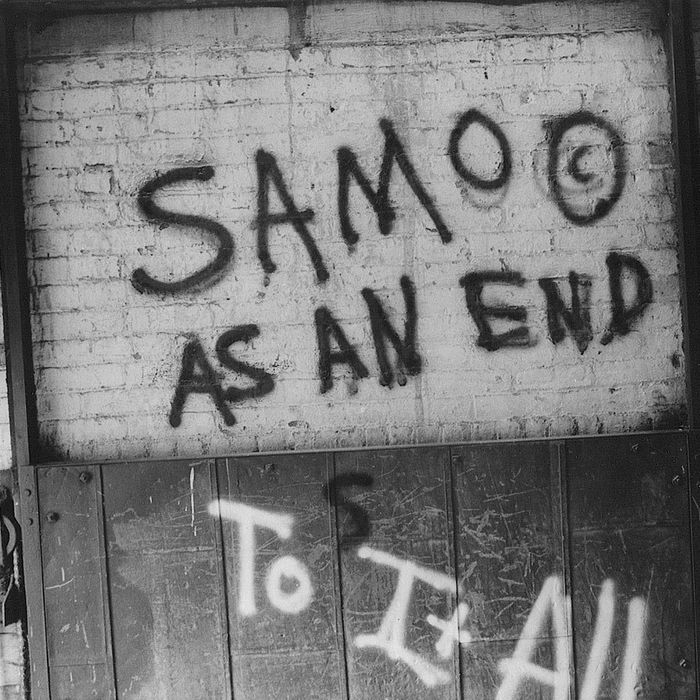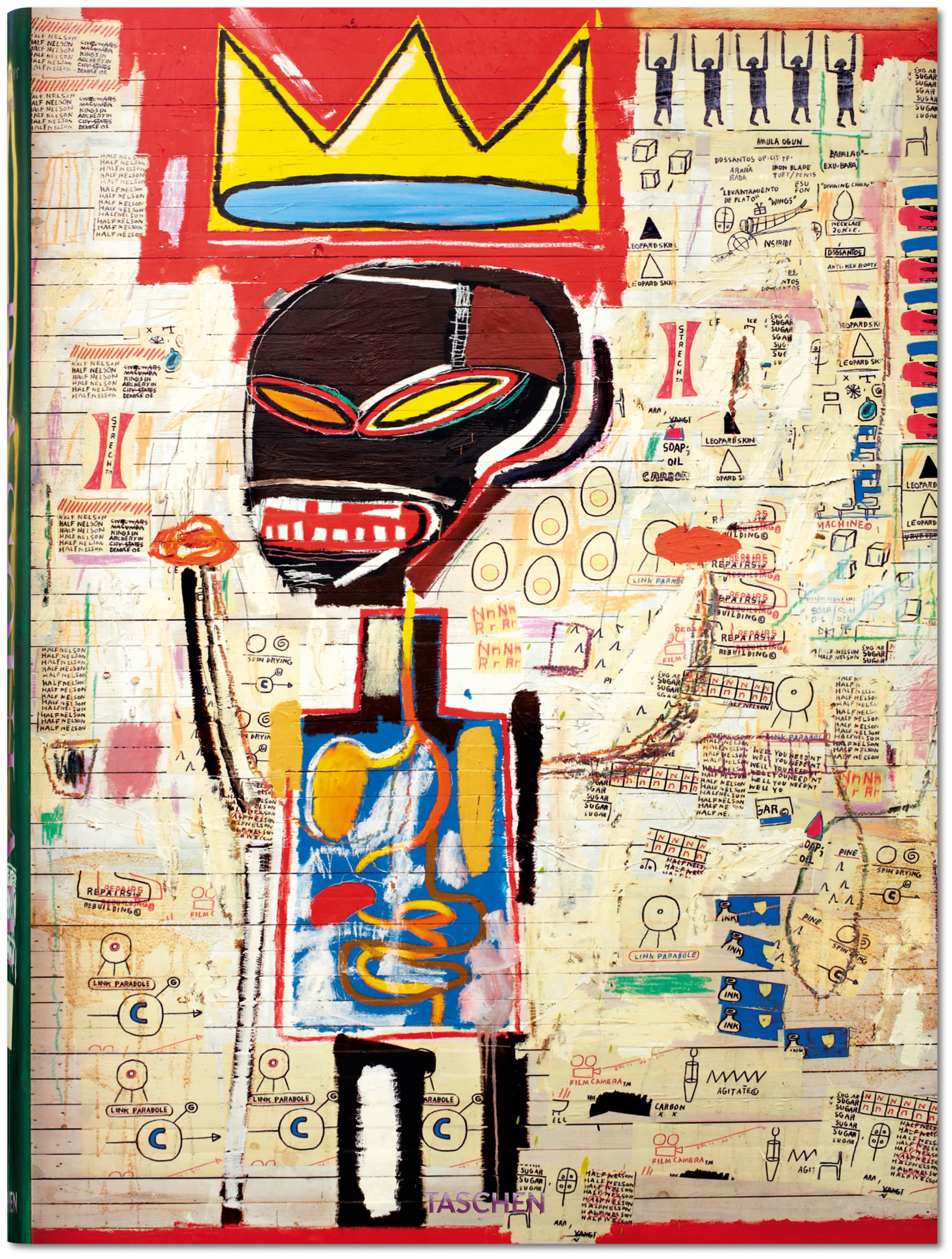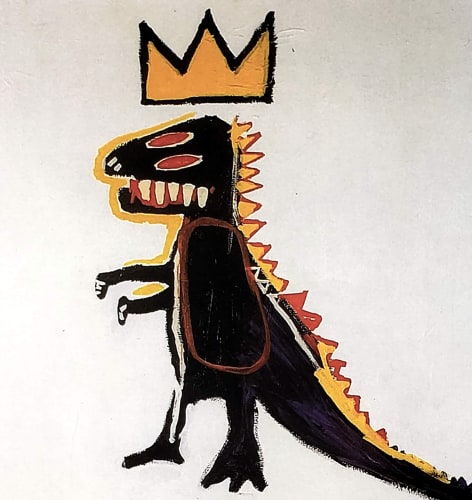Jean-Michel Basquiat’s crown is one of the most iconic and recognizable symbols in contemporary art. A simple three-pointed form—sometimes sharp and jagged, other times smooth and childlike—it appears repeatedly throughout his work, scribbled above skulls, kings, boxers, saints, and Black icons. To some, it looks cartoonish. To others, sacred. But what exactly did Basquiat mean by this motif? What did the crown represent in his complex visual language?
The answer, like much of Basquiat’s art, is layered. His crown wasn’t just a symbol of royalty—it was a code, a signature, a form of resistance, and a radical act of recognition.

The Origins of the Crown
Basquiat began his artistic career as a graffiti writer under the tag SAMO (short for “Same Old Shit”) in the late 1970s, alongside fellow artist Al Diaz. Even then, his visual language was rooted in symbols—quick, potent forms that could speak volumes from a wall or subway car. The crown first began appearing in these graffiti works and later evolved as Basquiat transitioned into painting.
Unlike classical crowns that adorned the heads of European monarchs or religious figures, Basquiat’s crowns were raw, imperfect, and intentionally messy. They weren't there to denote traditional royalty—they redefined who deserved to wear one.
Royalty Reimagined
Basquiat’s crown was a way of anointing heroes. Through it, he crowned athletes like Muhammad Ali, jazz legends like Charlie Parker and Dizzy Gillespie, and often, anonymous Black men whose names history had overlooked. By placing the crown above their heads, Basquiat wasn’t just calling them important—he was challenging a white-dominated art world that had largely erased or marginalized Black excellence.
In this sense, the crown became a tool of reclamation. It was a way to insert Black bodies, Black culture, and Black genius into art history—a history that had largely excluded them. He wasn’t asking for permission. He was declaring it.
The Crown as Signature
Another layer to the crown’s meaning is personal. For Basquiat, it was also a form of authorship—a stamp of presence. When he placed a crown in a painting, it was like signing his name, marking the subject as significant. It said: This matters. Pay attention.
Sometimes the crowned figure was a historical figure. Other times, it was Basquiat himself. In several self-referential works, he depicts himself with a crown—sometimes confidently, sometimes ironically. The act of crowning himself could be read as self-aggrandizing, but it’s more complex than that. It reflected his inner tension: his desire to be recognized, and his simultaneous discomfort with fame and commodification.
It’s important to remember that Basquiat was a young Black man navigating the elite white world of galleries and collectors in the 1980s. Crowning himself was not ego—it was survival. It was a refusal to be invisible.

Three Points, Three Meanings
Basquiat’s crown often has three points—a recurring number in many cultures and belief systems. Some art historians have suggested these three points represent the three realms of Basquiat’s artistic focus: the poet, the musician, and the great boxer.
-
The Poet refers to Basquiat’s love of words, his use of fragmented text, and his affinity with Beat writers and African-American poets.
-
The Musician connects to the deep influence of jazz and hip-hop in his work, rhythms that pulsed through his lines and compositions.
-
The Boxer symbolizes strength, resistance, and physical endurance—a common theme in Basquiat’s paintings, particularly through recurring figures like Joe Louis or Sugar Ray Robinson.
In this reading, the crown isn’t just decoration—it’s a philosophy. It’s Basquiat’s ideal of what a true king embodies: intelligence, creativity, and the courage to fight.

Crown as Cultural Weapon
Basquiat lived at the intersection of racial tension, gentrification, and artistic transformation in New York City. His work was political without being didactic, and the crown was a subtle but powerful form of cultural critique.
By inserting crowns into his canvases, Basquiat subverted European artistic conventions. In classical portraiture, crowns and halos were reserved for saints, monarchs, or divine figures—most often white. Basquiat ripped that convention apart and rebuilt it in his own image, giving divinity to the overlooked and majesty to the marginalized.
In doing so, he asked a critical question: Who gets to be remembered? Who is worthy of reverence?
Basquiat and Hip-Hop Royalty
It’s no coincidence that Basquiat’s crown motif has been adopted by generations of musicians and street artists, particularly within hip-hop culture. Artists like Jay-Z, Kanye West, and Biggie Smalls have either directly referenced Basquiat or echoed his visual language. The crown resonates deeply because it speaks to self-made power, Black excellence, and the redefinition of legacy.
Jay-Z famously posed in front of Basquiat’s crown works, calling himself “J-Hova” and comparing himself to kings and prophets. It’s not mere ego—it’s the continuation of Basquiat’s philosophy: If the world won’t crown us, we’ll crown ourselves.

More Than a Symbol
To reduce Basquiat’s crown to a mere symbol of royalty misses the point. It was a weapon, a prayer, a protest, and a personal mantra. It was a way of rewriting history through paint and line, of elevating the invisible, and of declaring value in a world that often refused to see it.
The crown is Basquiat’s legacy distilled—a reminder that art is not just about beauty, but about truth. It invites viewers to question who holds power, and why. And it reminds us, again and again, that kings can come from anywhere—even the streets of Brooklyn, armed with a spray can, a brush, and an unstoppable vision. Buy signed Basquiat prints at Guy Hepner and contact our galleries via info@guyhepner.com for latest availabilities or to sell your Basquiat prints.

